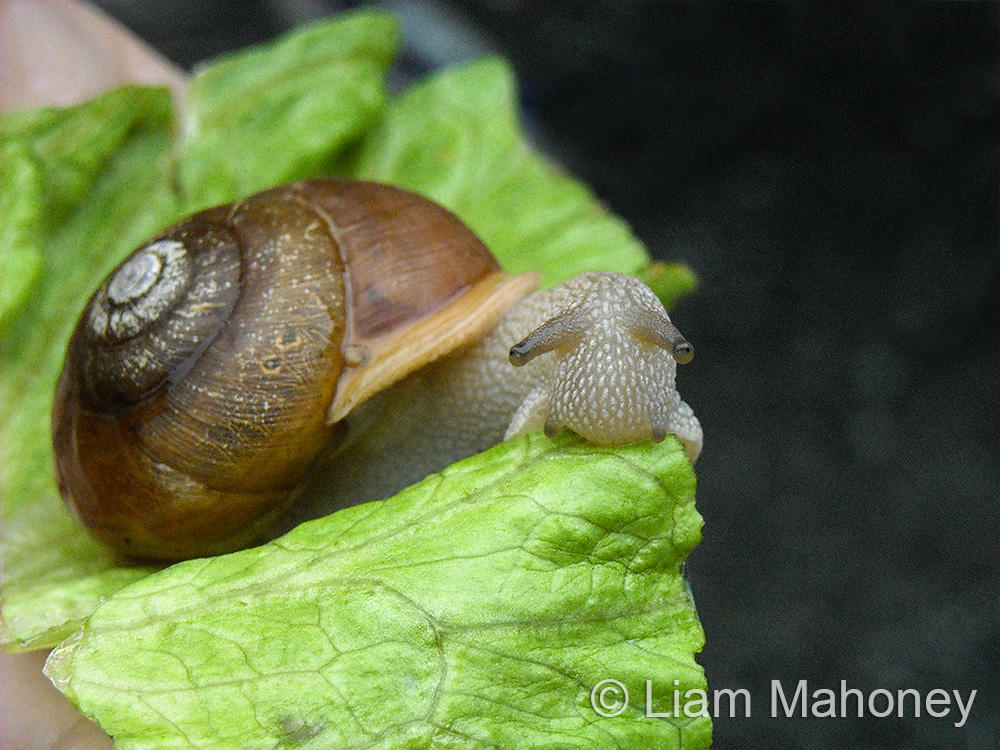You can find snails in leaf litter on the rainforest floor. It is the perfect place for them to find food and shelter. Have you ever seen a bunch of snails lying outside when the ground is wet? This is because snails are most active after it has rained. The rain helps prevent their soft bodies from drying out. When it’s not wet outside they curl their bodies into their shell to keep their skin moist. Snail shells are also used to protect snails from getting eaten by birds, as well as helping them survive harsh environments, and to combat sun damage.
Many different types of snails live in temperate to sub-tropical climates. The largest land snail is the Giant Panda snail. It is bigger than a tennis ball and is found in the Australian rainforest. Giant Panda snails have two pairs of tentacles. One pair of tentacles found on top of the head is used to hold the eyes. The other pair is used for touch, so the snails can better understand their surroundings.
Many different types of snails live in temperate to sub-tropical climates. The largest land snail is the Giant Panda snail. It is bigger than a tennis ball and is found in the Australian rainforest. Giant Panda snails have two pairs of tentacles. One pair of tentacles found on top of the head is used to hold the eyes. The other pair is used for touch, so the snails can better understand their surroundings.

Snails eat with thin tongues that have little teeth like nail files which shred their food. Fungi, plants, and algae make up a snail's diet. Snails do not have legs so it is hard for them to move very fast. Instead, they contract their muscles to help them inch along the ground. Snails leave behind a sort of goo that makes it easier for them to slide along on surfaces. Snails do not have lungs to breathe. Instead, they breathe through the pores of their skin.
Many snails are losing their homes because of the land being cleared for farming. Snails are also considered very good to eat and they are even used in the making of cosmetics such as skin creams. All of these activities have caused the snail population to decline. What can we do to save the snails and their homes?
Many snails are losing their homes because of the land being cleared for farming. Snails are also considered very good to eat and they are even used in the making of cosmetics such as skin creams. All of these activities have caused the snail population to decline. What can we do to save the snails and their homes?


